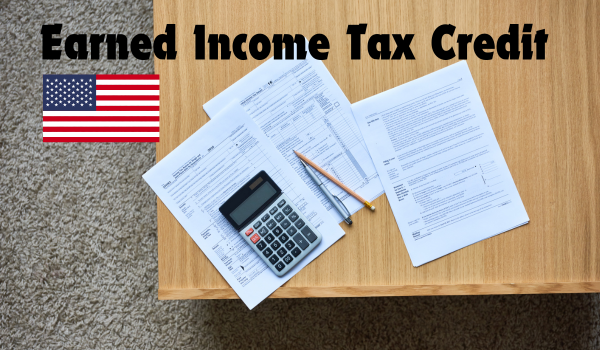The Earned Income Tax Credit (EITC) is one of the most valuable tax benefits available to low and moderate-income individuals and families in the U.S. It can provide a significant boost to your refund, making it easier to manage your finances and improve your financial well-being. Many people, however, are unaware of the details of the EITC payment for any income, which could lead to missed opportunities for financial support.
In this article, we’ll cover everything you need to know about the EITC payment—how it works, who qualifies, and how much you could receive. Whether you’ve claimed it before or you’re hearing about it for the first time, understanding the EITC could have a big impact on your annual tax return.
What Is the Earned Income Tax Credit (EITC)?
The Earned Income Tax Credit (EITC) is a refundable tax credit that’s designed to help individuals and families who earn a low or moderate income. The credit essentially reduces the amount of taxes you owe, and if your credit is larger than your total tax liability, you’ll receive the remaining amount as a tax refund.
One of the most appealing aspects of the EITC payment is that it’s refundable, meaning you can still benefit even if you owe little or no taxes. This is particularly important for families struggling to make ends meet or those with lower earnings.
To qualify for the EITC, you must meet certain income requirements, have a valid Social Security number, and file a tax return, even if you don’t owe any taxes. The EITC payment for any income is designed to assist families based on their earnings, family size, and filing status.
For more detailed information, visit the EITC Payment Guide.
Who Qualifies for the EITC?
Qualifying for the EITC payment depends on several factors, such as your income level, family size, and filing status. While this tax credit is aimed at low-to-moderate income earners, many people are surprised to learn they qualify, even with varied income levels.
Here are some basic requirements to qualify for the EITC:
1. Earned Income
You must have earned income from employment, self-employment, or other sources of taxable pay. This includes wages, salaries, tips, and other compensation for work performed. The EITC payment for any income is only available to those who have worked during the tax year.
2. Income Limits
Your income must fall below a certain threshold, which varies depending on the number of children you have and your filing status (single, married filing jointly, etc.). The income limits increase with the number of children you have, meaning larger families could qualify even with higher incomes.
Here’s a breakdown of EITC income limits for tax year 2024 (estimated based on previous trends):
- Single, no children: Income below $16,000
- Single, one child: Income below $43,000
- Single, two children: Income below $49,000
- Single, three or more children: Income below $53,000
- Married filing jointly, three or more children: Income below $59,000
For an accurate calculation of your income limit and eligibility, you can refer to the IRS’s EITC Assistant or visit this page.
3. Filing Status
You can qualify for the EITC payment whether you are single, married filing jointly, head of household, or a qualifying widow(er). However, married individuals filing separately are not eligible for the EITC.
4. Number of Children
While you can receive the EITC without having children, the amount you receive is significantly higher if you have qualifying children. Qualifying children must meet specific relationship, age, residency, and support requirements to be considered for the credit.
5. U.S. Citizenship or Resident Alien Status
You must be a U.S. citizen or resident alien for the entire year to qualify for the EITC.
6. Investment Income Limits
There’s also an investment income limit. For 2024, your investment income, such as dividends, interest, or rental income, must be under $11,000 to qualify for the EITC.
How Much Could You Receive?
The amount of the EITC payment you can receive depends on your income, filing status, and the number of children you have. Generally, the more children you have, the higher your EITC payment will be.
Here’s a quick look at the potential credit amounts based on the number of children:
- No children: Up to $600
- One child: Up to $3,900
- Two children: Up to $6,500
- Three or more children: Up to $7,200
The amount you receive decreases as your income increases beyond a certain threshold, but many working families can still qualify for a substantial refund.
For more details on the EITC payment for any income, refer to this EITC eligibility and benefits guide.
How to Claim the EITC
Claiming the EITC is relatively simple, but you must file a tax return to receive it, even if you’re not required to file due to low income. Here’s what you need to do:
1. File Your Taxes
To claim the EITC, you must file your taxes using the appropriate forms. For most people, this means filing Form 1040. If you have children, you’ll also need to complete Schedule EIC, which provides details about your qualifying children.
2. Use the EITC Assistant
The IRS offers a helpful tool called the EITC Assistant, which can guide you through the process of determining whether you qualify for the credit and how much you can expect. The tool is available online and is simple to use.
3. Check for Refund Delays
If you’re claiming the EITC, your refund may be delayed due to additional IRS scrutiny. This is to prevent fraud and ensure that only eligible individuals receive the credit. Be prepared for potential delays, especially if you file early in the tax season.
Common Questions About the EITC Payment
Q: Can I qualify for the EITC if I have no children?
Yes, individuals without children can still qualify for the EITC, but the credit amount will be smaller. The maximum EITC payment for those without children is typically around $600.
Q: Can I claim the EITC if I’m self-employed?
Yes, as long as you have earned income from self-employment and meet the other eligibility requirements, you can claim the EITC. Self-employed individuals will need to provide additional documentation of their income.
Q: Do I need to owe taxes to receive the EITC?
No, you don’t need to owe taxes to receive the EITC payment. The EITC is refundable, meaning you can still receive a refund even if you owe no taxes.
For more information on how to claim the EITC payment for any income, check out the detailed guide






